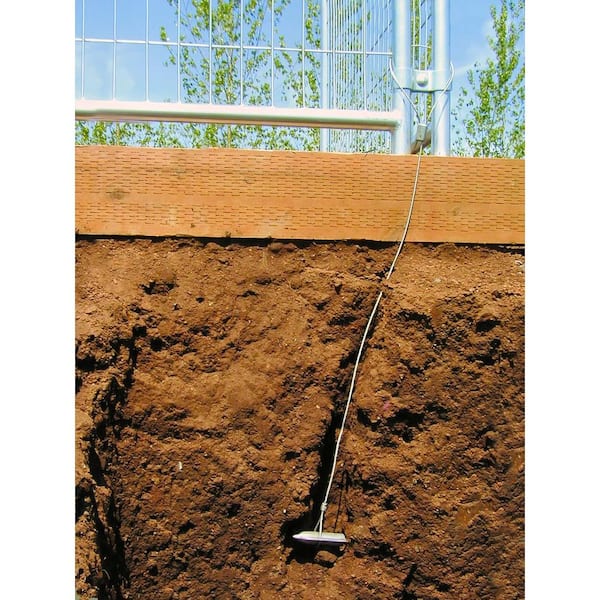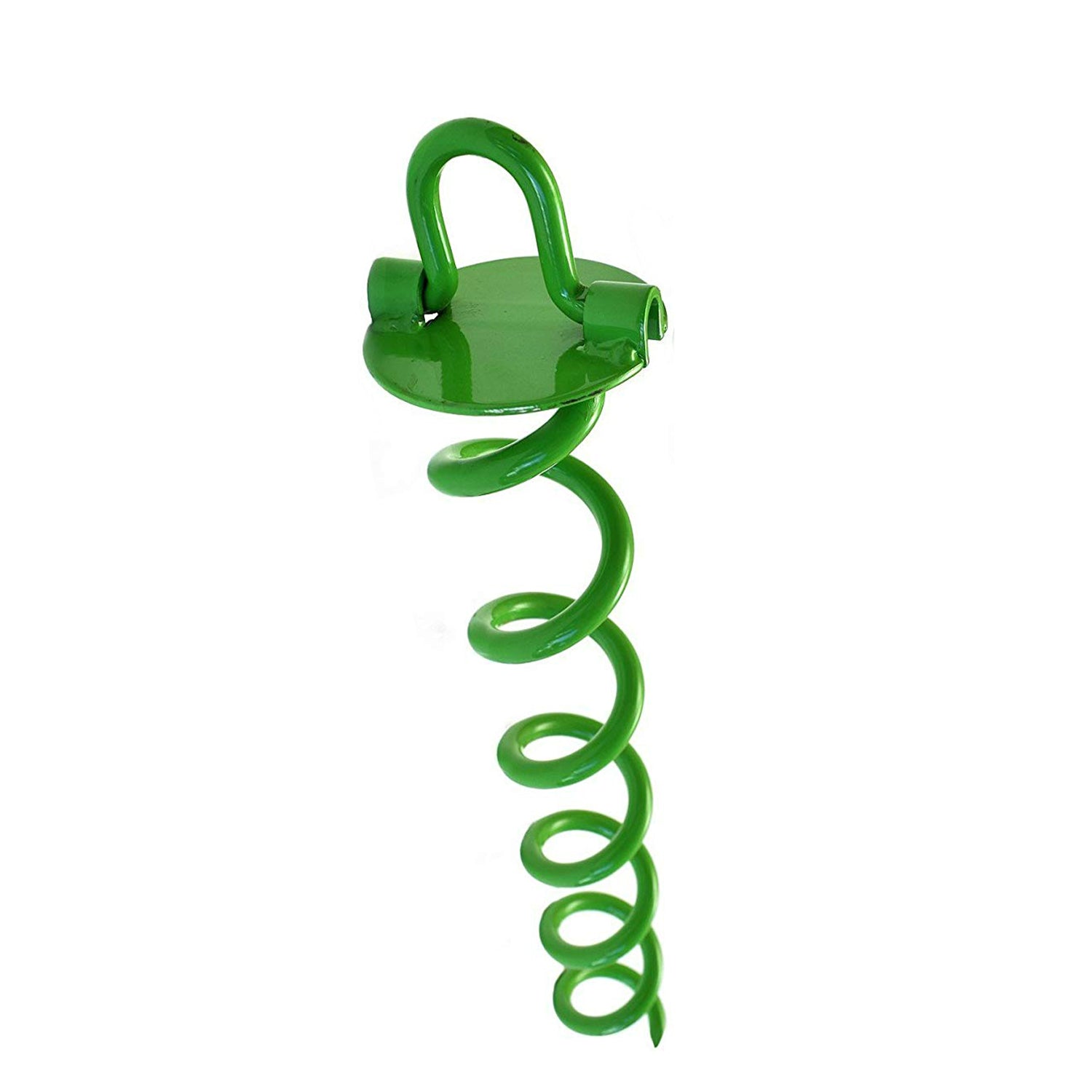New Advancements in Ground Anchor Manufacturing and Their Benefits
New Advancements in Ground Anchor Manufacturing and Their Benefits
Blog Article
Check Out the Different Kinds of Ground Support for Your Next Job
From auger anchors, which stand out in diverse soil conditions, to stake supports created for temporary installments, the alternatives are countless. In addition, concrete and screw anchors present unique benefits in certain situations, while deadman anchors are tailored for applications requiring resistance to side forces.

Auger Anchors
Auger anchors are a preferred option in numerous building and construction and landscape design tasks as a result of their special layout and efficient securing capacities. These anchors are composed of a helical screw-like shaft that is driven into the ground, permitting a protected and steady hold. The spiral style helps with simple installation and takes full advantage of resistance versus side pressures, making auger supports particularly reliable in applications such as fence, momentary frameworks, and erosion control.
The setup procedure of auger supports is relatively straightforward. They can be manually or mechanically mounted, relying on the size and called for depth. This versatility enables their usage in varied soil problems, from sandy to clayey terrains. Auger supports can be quickly eliminated and recycled, which adds to their cost-effectiveness and sustainability.
One of the substantial benefits of auger anchors is their capability to distribute tons equally throughout the surrounding dirt, decreasing the threat of dirt disruption and lessening environmental influence. In addition, they are much less prone to heaving or loosening up with time compared to traditional securing techniques. Auger anchors are an outstanding choice for jobs calling for reliable and resilient anchoring services.

Stake Anchors
When it involves safeguarding frameworks in a range of outdoor applications, risk supports offer a uncomplicated and reputable service. These anchors are commonly created from long lasting products such as steel or light weight aluminum, designed to stand up to environmental stresses while providing optimum security. Their basic layout permits quick setup, making them an optimal selection for temporary or irreversible anchoring needs.
Risk supports are especially useful in safeguarding tents, covers, and various other lightweight structures against wind and weather. They work by being driven right into the ground at an angle, producing a strong hold that withstands pull-out forces - Ground Anchor. The efficiency of stake supports relies on several elements, including dirt kind, moisture web content, and the angle of installation
For added safety, several stake supports come with accessory points for ropes or straps, allowing for stress adjustments as necessary. In applications such as landscape design or building and construction, they can effectively maintain tools or frameworks on uneven surface. In general, risk anchors provide a economical and versatile remedy for safeguarding various exterior setups, making them a recommended choice for specialists and do it yourself fanatics alike.
Concrete Anchors
Concrete anchors provide a robust solution for securing structures to concrete surface areas, making sure security and safety and security in various applications. These anchors are essential for projects varying from residential building and constructions to massive commercial installments. They are available in different types, including development supports, adhesive supports, and undercut supports, each designed for specific load requirements and ecological conditions.
Expansion anchors count on mechanical mechanisms to grasp the concrete when installed. They are perfect for medium to durable applications. Adhesive anchors use high-strength epoxy or material to bond the anchor to the concrete, providing premium load-bearing capabilities, especially in broken concrete situations. Undercut supports develop a special shape within the concrete, giving extraordinary holding power, specifically in applications where tensile loads prevail.
When executed properly, concrete anchors substantially enhance the architectural integrity of different tasks, making them vital in modern-day building and construction practices. Comprehending the details demands of your job will certainly assist in choosing the ideal type of concrete support for the job.
Screw Anchors

Screw supports are a flexible securing solution that can be efficiently used in a selection of applications where typical concrete supports might not be sufficient. These supports contain a helical design that permits them to be conveniently driven into the ground, making them perfect for usage in dirt and various other substrates. Their unique framework provides superb holding power and resistance to pull-out pressures, making them suitable for many projects, from landscaping to architectural support.
Among the primary benefits of screw supports is their simplicity of installation. They need very little devices and can commonly be set up without the need for excavation, which conserves both time and labor prices. Furthermore, screw supports can be removed and recycled, supplying a sustainable remedy for short-term applications.
Screw anchors are particularly valuable in areas where soil problems are testing, such as sandy or loose soils. Their ability to be installed at differing depths permits for modification based on particular task needs. On the whole, screw supports give a effective and reputable anchoring approach, making them an outstanding option for professionals and designers looking for efficient options for their tasks.
Deadman Anchors
Deadman supports work as a robust option for stabilizing frameworks in difficult problems, specifically where conventional anchoring methods may drop short. These supports contain big, heavy objects hidden underground, which develop resistance versus lateral pressures. The design commonly involves a horizontal part, such as a block of concrete or a steel plate, hidden in the soil, to which bands or cable why not look here televisions are affixed.
The performance of deadman great post to read supports depends on their capability to disperse tons over a larger area, reducing the danger of failing in unsteady soil conditions. They are specifically beneficial in applications such as keeping wall surfaces, temporary frameworks, and incline stablizing, where soil motion can compromise the integrity of the framework.
Installation of deadman supports requires mindful planning to guarantee they are put at the right depth and alignment, optimizing their load-bearing capacity. While they may call for more labor and product than light-weight supports, their integrity in unfavorable conditions makes them indispensable for long-term jobs. Deadman supports are flexible and can be adjusted to different applications, making them a go-to selection for designers encountering unique challenges in their jobs.
Verdict
In summary, choosing the suitable sort of ground anchor is important for guaranteeing security and security in numerous tasks. Auger anchors excel in varied dirt problems, while risk supports suit temporary applications. For concrete surface areas, expansion and adhesive anchors give trusted choices, and screw anchors use flexibility in difficult surfaces. Deadman anchors are particularly efficient in withstanding side pressures for retaining wall surfaces. Cautious factor to consider of these alternatives will enhance job end results and architectural stability.
Additionally, concrete and screw anchors existing special benefits in specific scenarios, while deadman anchors are tailored for applications requiring resistance to side Bonuses forces - Ground Anchor.Auger anchors are a popular option in different building and landscaping jobs due to their special style and efficient securing capacities. They come in different types, including growth supports, glue anchors, and undercut anchors, each designed for certain tons demands and environmental problems
Sticky supports use high-strength epoxy or material to bond the support to the concrete, supplying superior load-bearing capacities, specifically in split concrete scenarios. On the whole, screw anchors supply a trusted and effective anchoring approach, making them an outstanding selection for engineers and contractors looking for effective options for their jobs.
Report this page